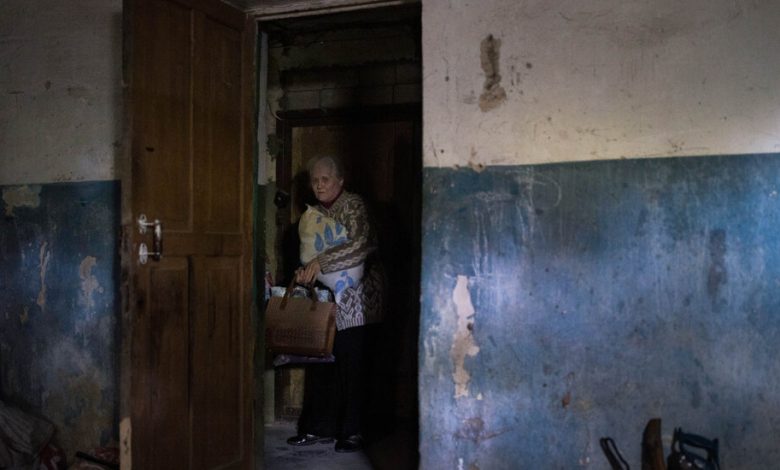As fighting intensifies in Ukraine’s east, a frontline town is cut off from the world.

SIVERSK, Ukraine — The eastern Ukrainian town of Siversk, for weeks the northernmost Ukrainian-held settlement in the Donbas before Russian-occupied territory began, was a military way station for much of the spring and into summer.
The gas station awning on its eastern outskirts provided shade for soldiers waiting to go to the front. A small shop, open for a few hours each day, served townspeople and troops alike.
To the east, the cities of Sievierodonetsk and Lysychansk fell to the Russians in June and July. Weeks passed. Russian forces advanced. Siversk the way station soon turned into Siversk the frontline town.
The Donbas region of mining towns and rolling fields has been central to Moscow’s war aims since Russia’s defeat around Ukraine’s capital, Kyiv, in the spring. With Luhansk Province under Russian control, analysts believed that neighboring Donetsk Province, with Siversk near its border, would be next to fall.
But after the Ukrainian military’s sweeping victory in the northeast last week that saw the retaking of dozens of villages and the liberation of more than a thousand square miles of territory, it seems that Siversk’s fate is once more undecided.
On Tuesday, Ukrainian officials claimed that roughly five miles away, Russian troops had been routed from the village of Bilohorivka. But from Siversk, Ukraine’s victory was unclear. Black smoke hung on the horizon and shelling echoed in the distance.
Some of the remaining residents had heard of Ukraine’s success in Bilohorivka via their smartphones but others remained unconvinced, having no connection to the outside world.
“We have no TV, no connection, no electricity,” said Valeriy Volodymyrovch, the head of a local commune in Siversk. “How do we hear what is going in Bilohorivka?”
When there is internet in Siversk, it is a gift from their mayor, residents in Siversk said. Most mornings, they added, the mayor treks out to a cell tower somewhere in town and fills up the generator.
Siversk, which had a prewar population of 10,000, has an aqua-colored train station. Factories break up the crouched skyline like beached shipwrecks.
The air is colder now. The leaves that changed from green to brown drift into bomb craters and the destroyed facades of homes. Three freshly dug graves, marked with homemade crosses, sit on the edge of a field.
Military vehicles dart from side street to side street. The bang of artillery is constant. Drones buzz overhead.
Now the shop is closed, its windows broken. There are no more Ukrainian troops in the shade of the gas station. They once leaned on their bags and laughed, almost certainly chattering about the fighting that lay ahead.
Natalia Yermak contributed reporting from Druzhkivka, Ukraine.




